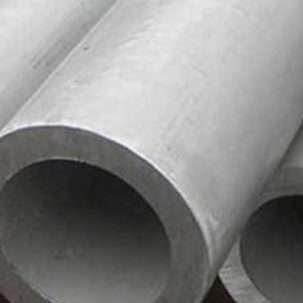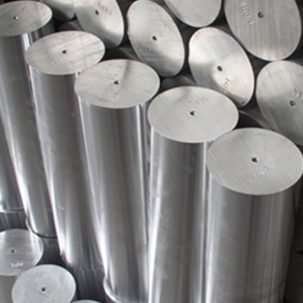Nimonic Alloy 263
- Great strength
- High-temperature tolerance
- Good proof and creep strength
- Appreciable formability and weldability
Description
Overview:
Nimonic alloy 263 is an age-hardening alloy with the prime constituents being Nickel, Chromium, Cobalt, and Molybdenum. This alloy is well-reckoned for displaying excellent intermediate temperature tensile ductility. It is also free from strain age cracking issues, which are common in many other alloys.
This Nimonic alloy is excellent in terms of heat tolerance and thus is widely used in industries working with high temperatures. Being easy to form, this alloy is also used to form turbine blades for aerospace and land-based applications.
Common Names:
- UNS N070263
- Nr. 2.4650
- AMS 5872
- AMS 5886
- DIN 2.4650
Executive Standards:
Rod, Bar, Wire, and Forging Stock
- DIN17752
- AECMA PrEn 2199, 2201
- BS HR 10
- DIN 17753
- DIN 17754
Plate, Sheet, and Strip
- BS HR 206
- DIN 17750
- SAE AMS 5872
- AECMA PrEn 2203
- AECMA PrEn 2418
Pipes and Tubes
- BS HR 404
- DIN 17751
- AECMA PrEN 2202
Chemical Properties:
| Nickel | 49 |
| Cobalt | 19-21 |
| Chromium | 19-21 |
| Molybdenum | 5.6-6.1 |
| Titanium | 1.9-2.4 |
| Iron | 0.7 |
| Others | Remainder |
Mechanical Properties:
| 0.2% Yield Strength (MPa) | 550 |
| Tensile Strength (MPa) | 940 |
| Tensile strength (psi) | 136000 |
| Break Elongation | 39 |
| Hardness | 195 HV |
Physical Properties:
| Density | Lb/in3 | 0.302 |
| g/cm3 | 8.36 | |
| Expansion Coefficient | 69.8-212oF | 5.72µin/in°F |
| 21-100oC | 10.3 µm/m°C | |
| Thermal Conductivity | W/m-K | 11.7 |
| BTU-in/hr-ft2–oF | 81.2 | |
| Melting point | oF | 2450 |
| oC | 1355 |
Key Features:
- High heat tolerance: Nimonic 263 is known for its ability to withstand high temperatures without cracking or deforming. It is a very demanded feature for numerous industries and ensures the proper functionality of machines.
- High strength: Alloy 263 is a robust alloy, which does not give up even when the temperature goes high. Its toughness and rigidity make it a very suitable alloy for constructing vessels for combustion.
- Excellent intermediate temperature ductility: At intermediately high temperature, this alloy can be easily drawn into wires because of its superb malleability feature.
Product Forms Available:
- Bars
- Wire
- Plates
- Sheets
- Strips
- Forgings
- Tubes
Applications:
- Low-temperature combustors
- Transition liners
- Ring components
- Gas turbine parts manufacturing
- Aircraft turbine engine
Possible Alternate Grades:
- Nimonic 75: This Nimonic alloy is a great choice to be used in caustic environments, involving corrosive acids and gases since it exhibits high resistance against these agents. Along with that, it also displays excellent heat tolerance and high tensile strength, thus making it suitable for use across multiple industries. It can be welded and fabricated easily, and hence forming parts out of this alloy is easy.
- Nimonic 90: This alloy performs exceptionally well when it comes to corrosion and oxidation resistance. Thus, chemical-based industries make use of this alloy in various contexts. But what is special about Nimonic 90 is its exhibition of great strength even at temperatures as high as 704°C. This alloy finds use in oil and gas, nuclear, aerospace, and many other manufacturing industries.
Frequently Asked Questions:
- Why should lubricants be cleaned entirely from this alloy after cold forming?
The traces of lubricants might lead to embrittlement of Nimonic 263.
- What material is recommended for welding alloy 263?
It is recommended to use matching alloy filler metal to perform welding of the alloy 263.
- How can Nimonic 263 be annealed?
This alloy should be solution annealed at 1149°C (2100°F) followed by water quenching.
Get A Free Quote Now!








